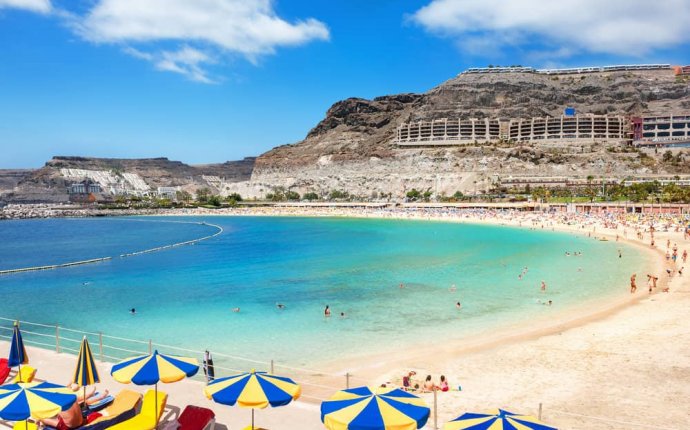
Weather Porto Rico Gran Canaria

Weather in Puerto Rico
Puerto Rico is a holiday resort located on the southwestern coast of Gran Canaria in the Canary Islands, Spain – not to be confused with the Commonwealth of Puerto Rico in the Caribbean.
The Canary Islands are nicknamed the ‘Islands of Eternal Spring’, due to their consistently pleasant climate all-year-round. While belonging to Spain, the islands actually sit off the northwest coast of Africa, near Morocco and the Western Sahara. The Canary Islands receive cooler temperatures than locations on the same latitude, thanks to the cooling, southwest Canary Current and the usual moderating effects of the sea.
Gran Canaria has a mountain range stretching from north to south, dividing the island in two. During the winter months – January and February in particular – the mountain peaks can be capped in a thin layer of snow which usually falls when winter rain storms affect the more coastal parts of the island.
Thanks to its extreme southerly location, Puerto Rico enjoys some of the best weather in Gran Canaria, with almost 3, 000 hours of sunshine each year and hardly any rainfall at all. Generally, the resort is the hottest and sunniest in the Canary Islands, thanks to the barrier that the mountain range creates. This barrier traps the cool and humid winds on the north eastern side of the island, where clouds form and result in rain that the south western side doesn’t receive.
 Puerto Rico has a sub-tropical climate with just two seasons – warm winters with very small quantities of rainfall and hot summers with no rainfall at all. Across the year, the temperature typically varies between 15°C and 27°C, rarely dropping below 13°C or rising above 30°C. However, when calimas affect the resort – which they often do during the summer months – temperatures can spike as high as 40°C.
Puerto Rico has a sub-tropical climate with just two seasons – warm winters with very small quantities of rainfall and hot summers with no rainfall at all. Across the year, the temperature typically varies between 15°C and 27°C, rarely dropping below 13°C or rising above 30°C. However, when calimas affect the resort – which they often do during the summer months – temperatures can spike as high as 40°C.
February, November and December are the wettest months of the year, whilst June, July and August are the driest when rain usually never falls. And whilst the sea in most resorts in Canary Islands is too cold for swimming in for a few months in winter, Puerto Rico’s extreme southerly location means that the sea is always warm enough for swimming in, regardless of which month you visit.
Summer
Summer in Puerto Rico is classed as May to October, when the average temperature for the season 22°C. August and September are the hottest months, when the average temperature is 24°C, whilst May is the coolest month of the season, when the average temperature is 20°C. The hottest temperature ever registered at Gran Canaria Airport – the closest weather station to Puerto Rico – is 44.2°C, which was registered on July 13th 1952.
This record temperature was registered when the resort was subject to a calima. Whilst the Canary Islands are usually kept relatively mild thanks to the trade winds which blow in from the north east, a calima occurs when the winds change direction and blow in from an easterly direction. When they blow over this way, they cross over the Sahara Desert in North Africa first, bringing with them high temperatures up to 10°C hotter than normal and an intense concentration of dust and sand particles in the air which causes low visibility and a general discomfort for people with respiratory conditions.
When a calima occurs, there really isn’t anything you can do but wait it out. Staying inside an air-conditioned building is the best way to avoid the heat and stifling conditions, but if you want to get out, head for the beach. The coastal areas are usually the least affected by calimas, since they’re kept reasonably cool and clear by coastal breezes.
There is only a minor difference between temperatures during the daytime and temperatures on an evening, so you’ll never get any chilly nights. Across the summer, average highs range between 22°C and 26°C, whilst average lows range between 17°C and 21°C.
Hardly any rain falls at all during this season. May starts with an average rainfall of just 2mm over three days. This drops down to 0mm across June, July and August. The average rainfall rises up to 9mm across three days in September, peaking at 10mm in October when rain falls on an average of five days. During the first four months, drizzle is the most common form of rainfall, but this transitions into moderate rainfall across September and October.